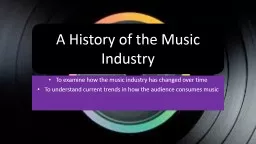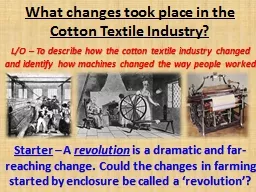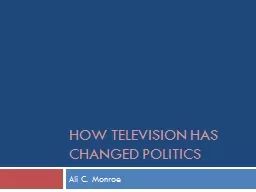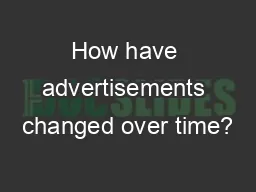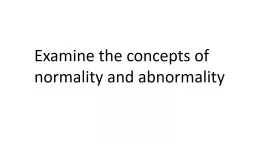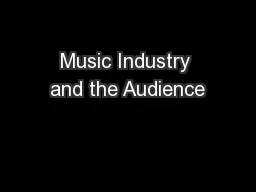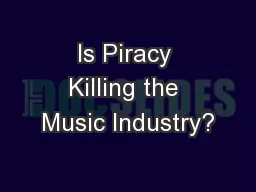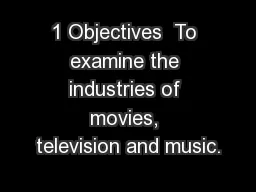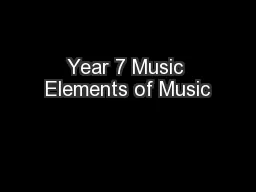PPT-To examine how the music industry has changed over time
Author : tatiana-dople | Published Date : 2017-09-17
To understand current trends in how the audience consumes music A History of the Music Industry The past of the Music Industry up to 1990s The record label was all
Presentation Embed Code
Download Presentation
Download Presentation The PPT/PDF document "To examine how the music industry has ch..." is the property of its rightful owner. Permission is granted to download and print the materials on this website for personal, non-commercial use only, and to display it on your personal computer provided you do not modify the materials and that you retain all copyright notices contained in the materials. By downloading content from our website, you accept the terms of this agreement.
To examine how the music industry has changed over time: Transcript
Download Rules Of Document
"To examine how the music industry has changed over time"The content belongs to its owner. You may download and print it for personal use, without modification, and keep all copyright notices. By downloading, you agree to these terms.
Related Documents

